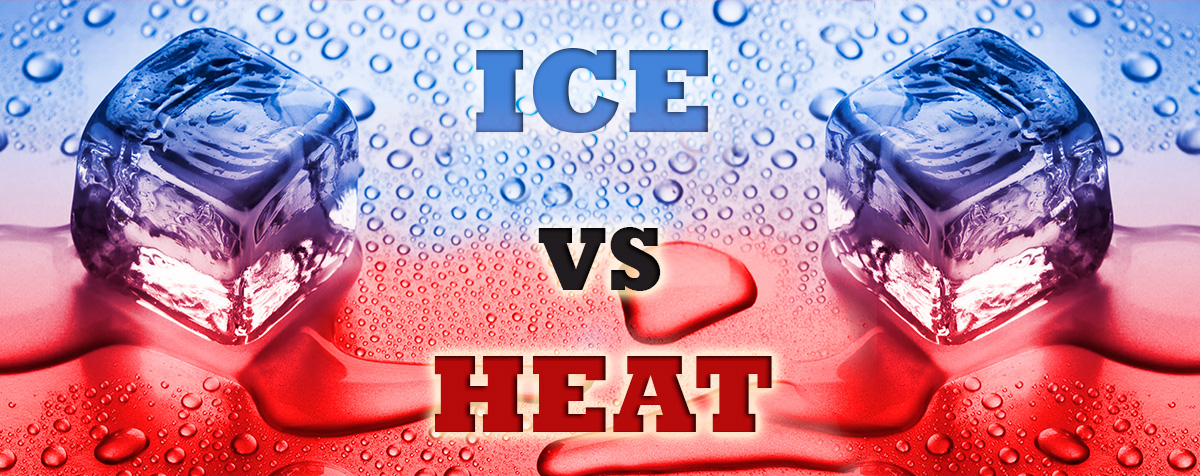The debate of Ice vs. Heat has been ongoing since long before Rangers vs. Capitals! Please read on to find out when to use which.
Ice vs. Heat
Within the first 72 hours of acute injury icing is important. Icing helps keep the swelling under control and helps to decrease pain, decreasing the facilitation of the nerves in the affected area. By slowing down the cell metabolism it helps decrease secondary chemical damage. When applying ice, you will progressively feel a cold sensation, then burning, aching and numbness. At the numbness stage remove the ice. Ice may be applied for 10-20 minutes depending on the tissue, at a ratio of 1:4 (time on : time off). After 48-72 hours the inflammation process should be over (chronic inflammation will be discussed at another time) and begin being applied intermittently. Alternating cold and heat is recommended with a ratio of 3:1 hot to cold. Timing can vary but 3-4 minutes of heat and 1-2 minutes of cold for 20-30 minutes is sufficient for one session. After a period of a few weeks when the later stages of healing have begun, heat may be applied to the affected area. The heat helps increase the circulation to the affected tissue to optimize healing as well as loosen up any pitting edema that may reside in the area. Heat can be used in sessions of 20-30 minutes, with deeper structures (ie. back, thigh) getting longer time than superficial structures.
|
Contraindications |
|
|
Heat |
Acute conditions, peripheral vascular disease (cannot dissipate heat), impaired circulation, poor thermal regulation. |
|
Ice |
Cardiac or respiratory involvement, uncovered open wounds, circulatory insufficiency, cold allergy and/or hypersensitivity, anesthetized skin. |
After physiotherapy, you may want to ice to help limit any aggravation after your appointment. You may be a little sore for 24 to as much as 48 hours following your physio appointment, depending on the nature of your treatment. Unless otherwise instructed by your Physiotherapist or Athletic Therapist, icing is the indicated to help minimize pain and aggravation.
Contributed by Ryan Worm, a Certified Athletic Therapist and Osteopathy (Current Study), with Physio In Motion. You can see Ryan Monday-Friday 9:00am – 5:00pm at our 700 Main Street East location in Hamilton. For an appointment please call (905) 218-6556.
Chaitow, L., Bradley, D., & Gilbert, C. (2002). Multidisciplinary approaches to breathing pattern disorders. Edinburgh: Churchill Livingstone.
Horodyski, M. B., & Starkey, C. (2004). Laboratory activities for therapeutic modalities. Philadelphia: F.A. Davis.

